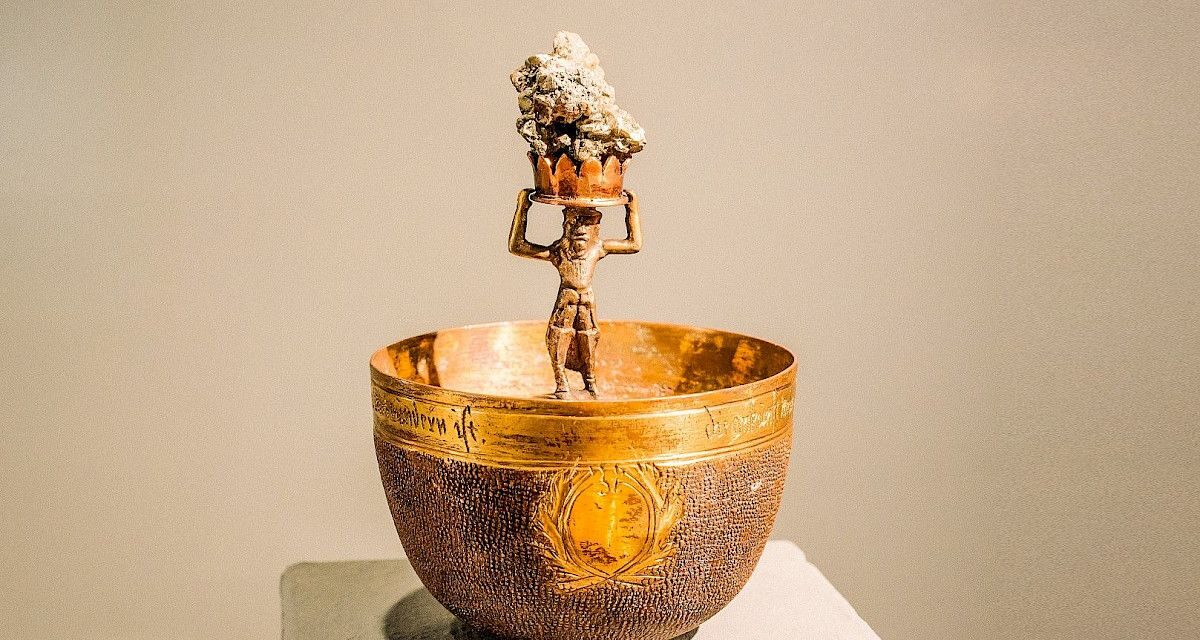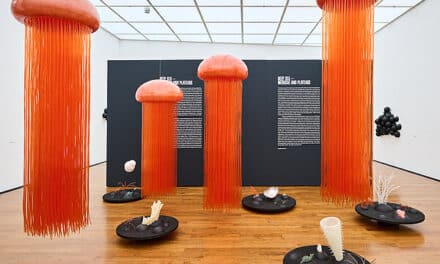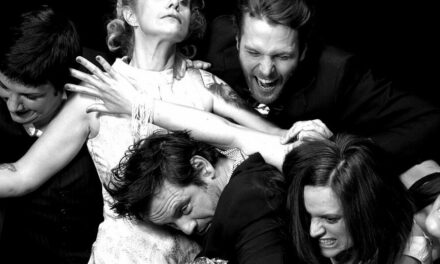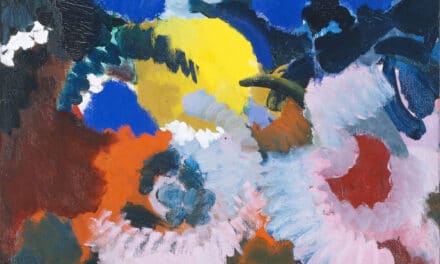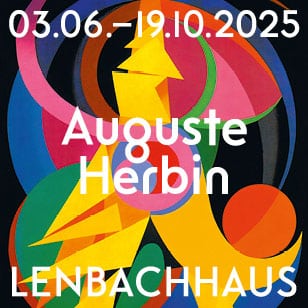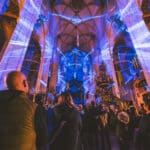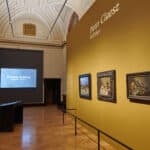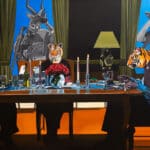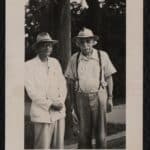Die inhaltliche Ausrichtung des Museums entspricht dem Leitsatz „Blühender Bergbau ist blühende Kunst“, da das ausgehende Mittelalter die Blütezeit des Bergbaues im Erzstift Salzburg, insbesondere in Leogang, war. Durch die erlangten Reichtümer hat man gotische Kunstwerke in Auftrag gegeben, die heute von Weltrang sind.
Das Bergbau- und Gotikmuseum Leogang beheimatet bergbauliche Meisterwerke und sakrale gotische Kunst von europäischer Spitzenqualität, wie beispielsweise die Gebetsnuss der Maria von Burgund. Außerdem zeichnet man sich durch die zahlreichen Rückführungen Europäischer Kulturgüter, wie zum Beispiel Raubkunst oder durch den Kunsthandel abhanden gekommene Objekte, aus.
Ziel der Dauer- und Sonderausstellungen ist es, die Schönheit der Exponate hervorzuheben und die Geschichte dahinter lebendig zu vermitteln. Um den Besuchern das mittelalterliche Kunsthandwerk praktisch zu zeigen, wurde eine mittelalterliche Schmiede reaktiviert sowie eine Mal- und Schnitzstube eingerichtet.
Das Bergbau- und Gotikmuseum Leogang setzt auf allerhöchste Qualität und hat durch hochwertige Ausstellungen, der professionellen Arbeitsweise und persönliche Vermittlung international mittlerweile einen ausgezeichneten Ruf erworben. Dies spiegelt sich insbesondere in den hochrangigen Sonderausstellungen in Kooperation mit den größten Europäischen Museen wider.
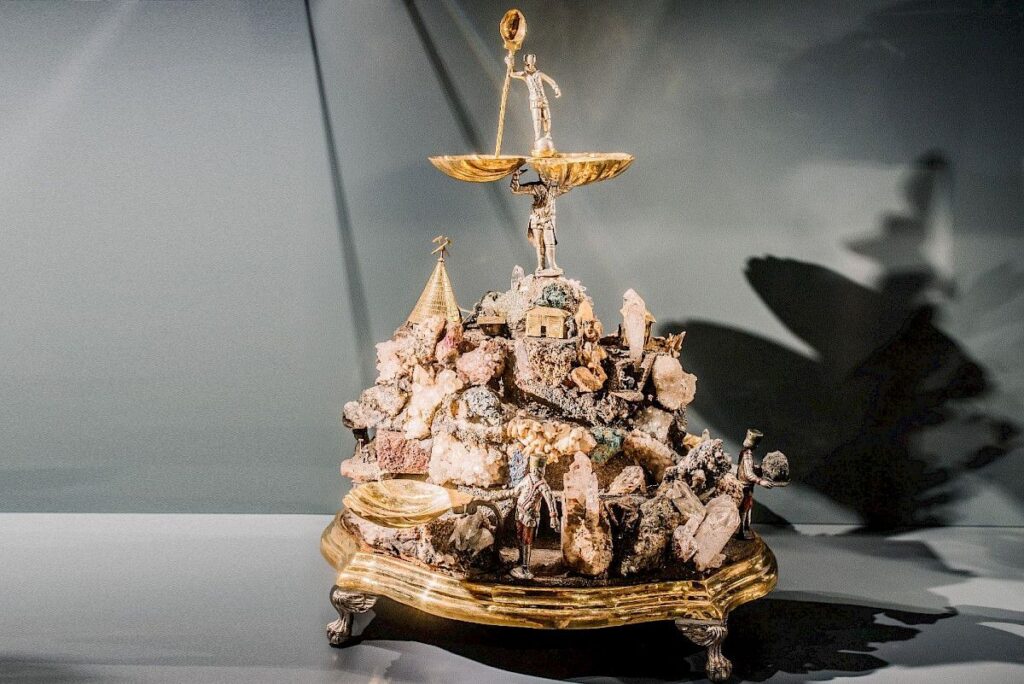
Sonderausstellung: Rotes Gold – Das Wunder von Herrengrund, Foto Susanne Bayer © Bergbau & Gotikmuseum Leogang
Sonderausstellung: Rotes Gold – Das Wunder von Herrengrund
Die kommende Sonderausstellung widmet sich montanhistorischen Kostbarkeiten aus dem slowakischen Erzgebirge. Im Mittelpunkt steht dabei eine der umfangreichsten und bedeutendsten Sammlungen an Herrengrunder Gefäßen aus Privatbesitz. In Kombination mit der Pracht der Handsteine und weiterer bergbaulicher Kunstobjekte wird die Reichhaltigkeit der Kulturregion sowie das Standesbewusstsein der Bergleute in den Gebieten um Herrengrund (Špania Dolina) besonders zum Ausdruck gebracht.
Das „Wunder von Herrengrund“ bezieht sich auf den Kupferbergbau im slowakischen Erzgebirge. Den Bergleuten fiel wohl vor rund 400 Jahren auf, dass in Bergwässern hinterlassene Eisengegenstände nach einigen Wochen oberflächlich in Kupfer umgewandelt worden waren, dieser Vorgang musste den Knappen geheimnisvoll, einem Wunder gleich, erschienen sein. Gekonnt nutzten sie diese Entdeckung, um Zementkupfer herzustellen und damit Kunstgegenstände zu produzieren, um die nach damaliger Sichtweise recht rätselhafte Gewinnungsart des Kupfers weithin bekannt zu machen.
Die Fertigung von Handsteinen begann im 16. Jahrhundert im böhmischen Erzgebirge, im 18. Jahrhundert nahm man sich im slowakischen Erzgebirge, vor allem in den Orten Schemnitz (Banská Štiavnica), Kremnitz (Kremnica) und Neusohl (Banská Bystrica), der Kunst der Handsteingestaltung an. Diese barocken Handsteine zeichnen sich vor allem durch die Zusammensetzung aus vielen verschiedenen Mineralien aus, es sind vor allem Bergbauszenen zu sehen.
Ab 23. Mai 2024
Salzburger Kunsthandwerk
Im Mittelpunkt dieser Ausstellung stehen kunsthandwerkliche Erzeugnisse vom Mittelalter bis heute, geordnet nach Materialien wie Bergkristall, Steinbockhorn, Gold, Silber, Eisen, Keramik, Holz und Bein, die im größeren Salzburg hergestellt oder verwendet wurden. Die ausgestellten Objekte besitzen neben ihrem künstlerischen Wert oft eine mystische Kraft, die ihnen je nach Material zugeschriebenen wurde. Unser Ziel für die Ausstellung ist es, die Reichhaltigkeit, Schönheit und Mystik der Kunstgegenstände aus unserer Kulturregion zum Ausdruck zu bringen.
bis 31. Oktober 2024
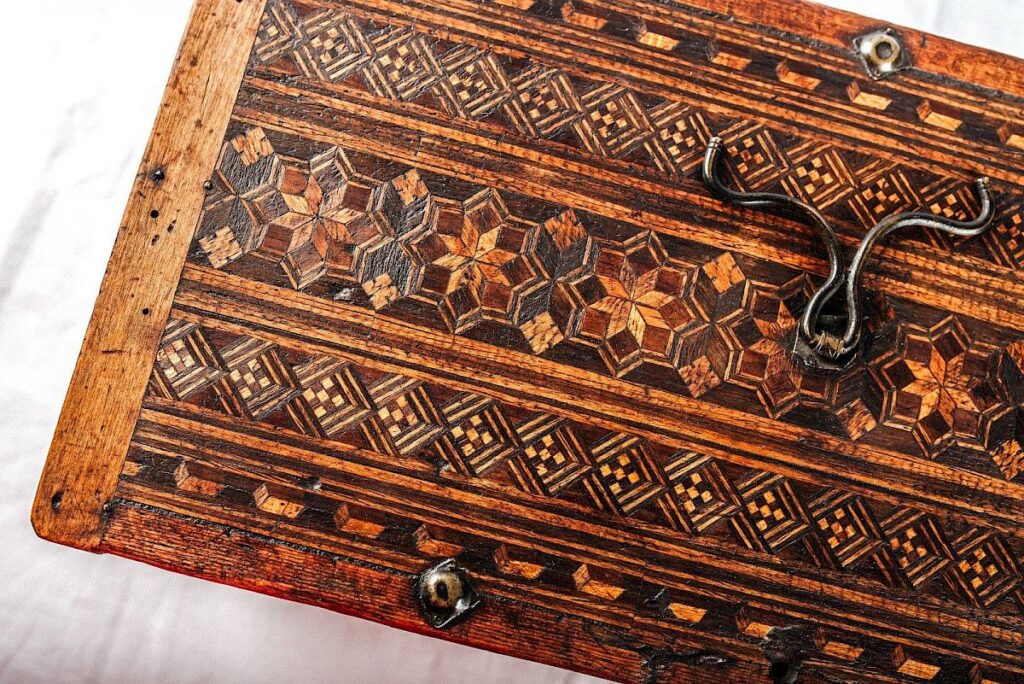
Salzburger Kunsthandwerk, Foto Susanne Bayer © Bergbau & Gotikmuseum Leogang
Die Kunst der Romanik
Neben gotischen Skulpturen können jetzt in Leogang auch wertvolle romanische Bildwerke bestaunt werden. Dazu gehört auch eine Heilige Anna, die als eine der frühesten Annaskulpturen überhaupt gilt. Sie entstammt der Endphase der Romanik um 1200 und wurde im Pustertal, also in der ehemaligen Kirchenprovinz Salzburg, gefertigt. Ihre Bedeutung erhält die Figur nicht nur aufgrund ihres hohen Alters, sondern auch wegen der ikonographischen Einzigartigkeit, die durch die Krönung beider Figuren entsteht. Ebenfalls Teil der Ausstellung sind ein vergoldetes Bronzekruzifix aus der 2. Hälfte des 12. Jahrhunderts sowie eine Auswahl an Emaille-Arbeiten aus Limoges, die die Bedeutung des Kunsthandwerks in der Romanik widerspiegeln.
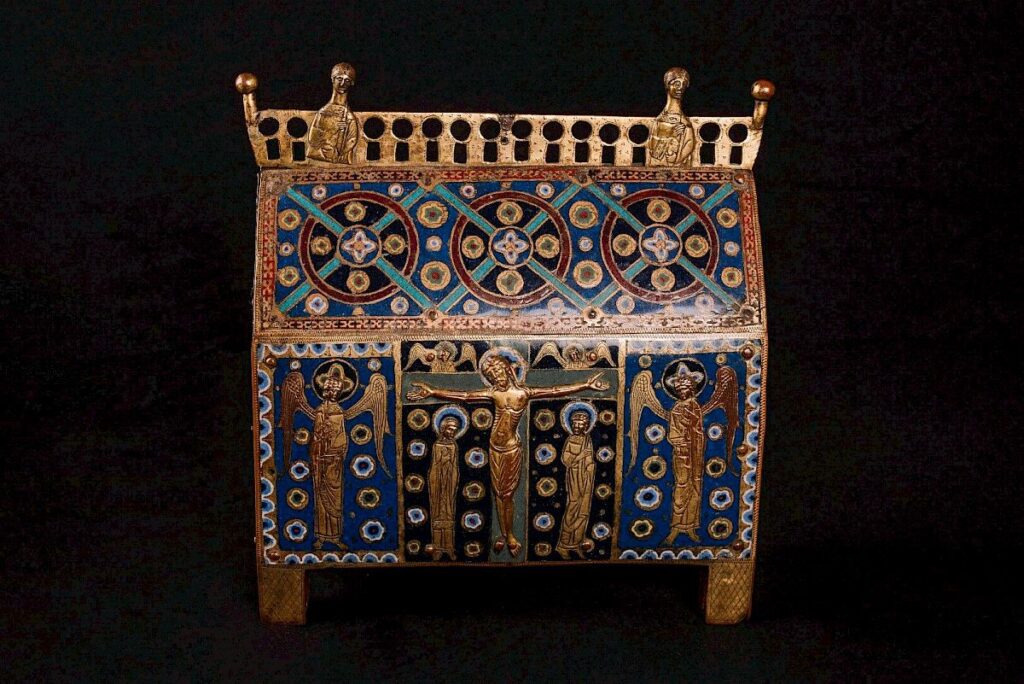
Die Kunst der Romanik, Foto Susanne Bayer © Bergbau & Gotikmuseum Leogang
Geistliche Schatzkammer, Salzburg
Das mittelalterliche Salzburg zählte in religiöser, kultureller, wirtschaftlicher und politischer Hinsicht zu den vier bedeutendsten Fürstentümern Europas. Erzbischöfe sowie Äbte und Äbtissinnen beauftragten für den Dom und die Klöster die besten Handwerker, um wertvollste Kunstwerke aus erlesenen Materialien für deren Schatzkammern herzustellen.
Mittelpunkt dieser Ausstellung ist eine 14 cm große Salzburger Madonna mit Kind aus Buchsbaumholz um 1400. Die heute durch ihr herausragendes Schnitzwerk beeindruckende Figur erschien dereinst in kostbar glänzendem Gold mit blau gefassten Mantelaufschlägen. Größter Dank gilt dem Sponsor, der dem Bergbau- und Gotikmuseum Leogang sehr verbunden ist, sowie allen Leihgebern der „Geistlichen Schatzkammer, Salzburg.“
Die wertvollen Objekte bringen die Bedeutung des mittelalterlichen Erzstiftes Salzburg besonders zum Ausdruck. Um die Einzigartigkeit, die hohe Qualität sowie die Heiligkeit der Objekte hervorzuheben, entschied man sich bewusst für eine Präsentation ohne Beschriftungen – Ganz unter dem Motto „Schauen und Staunen“.
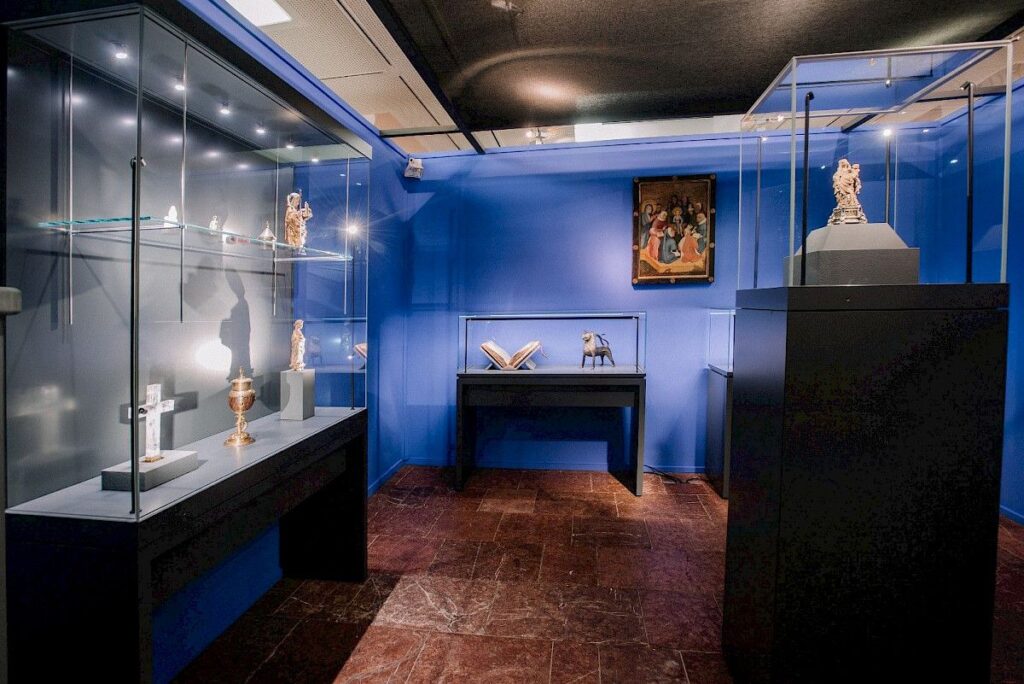
Geistliche Schatzkammer, Salzburg, Foto Susanne Bayer © Bergbau & Gotikmuseum Leogang
Schatz- und Wunderkammer Nora von Watteck
In der Renaissance und im Barock richteten sich viele vermögende Fürsten repräsentative Kunst- und Wunderkammern ein. Sie sollten den Reichtum und den Kunstsinn sowie das dem Zeitgeist entsprechende spirituelle Niveau des Besitzers demonstrieren.
Die kunsthistorischen Interessen der wohl bedeutendsten Salzburger Volkskundlerin, Nora von Watteck, wurden schon im Vorschulalter durch ihren Großvater geweckt, der als Antiquar für sich selbst in einem separierten Raum eine Wunderkammer angelegt hatte.
Frau Watteck begann die Wunderkammer ihres Großvaters in der Salzburger Brodgasse kontinuierlich zu ergänzen. Nach ihrem Tod 1993 sorgte noch ihr Sohn, Hofrat Prof. DI Arno von Watteck, für Ergänzungen und räumliche Strukturierungen.
Dass diese Wunderkammer an das Bergbau- und Gotikmuseum Leogang kam, ist kein Zufall, sondern beruht auf den prägenden freundschaftlichen Beziehungen des Sohnes Arno von Watteck zu Kustos Prof. Hermann Mayrhofer. Der Zweck der Ausstellung ist es, den Namen Nora von Watteck und die großartige Sammlung zu bewahren und der Öffentlichkeit zugänglich zu machen.
www.museum-leogang.at

